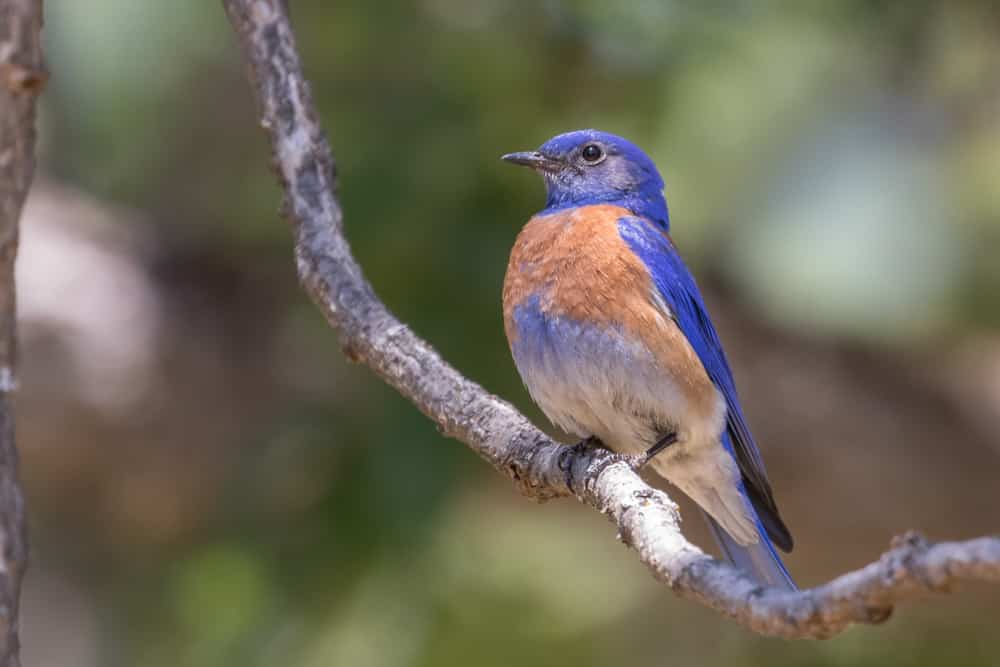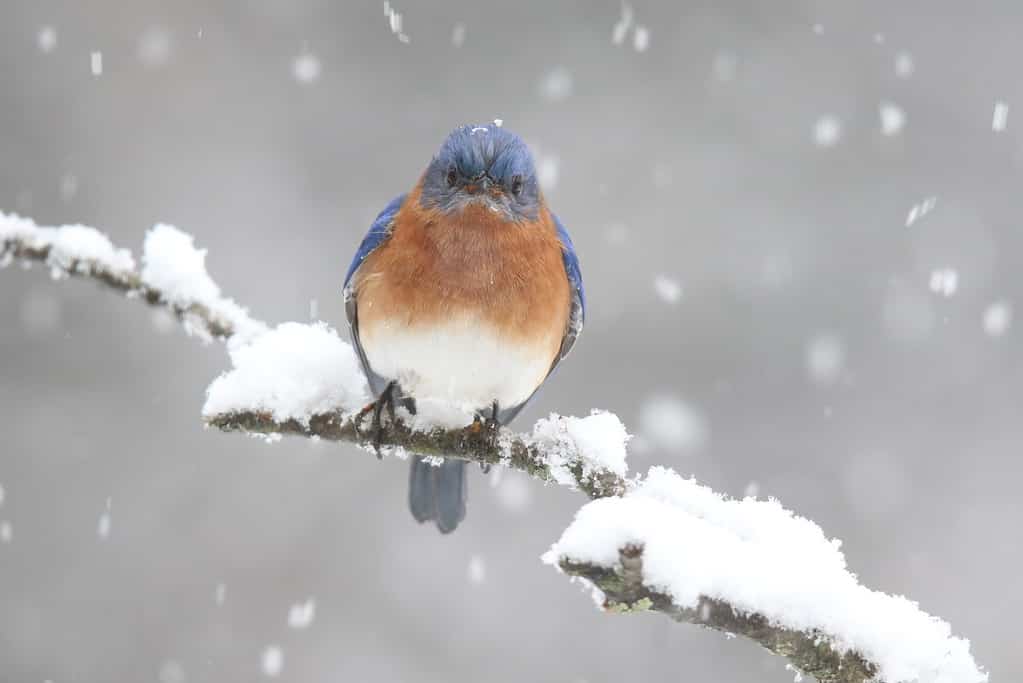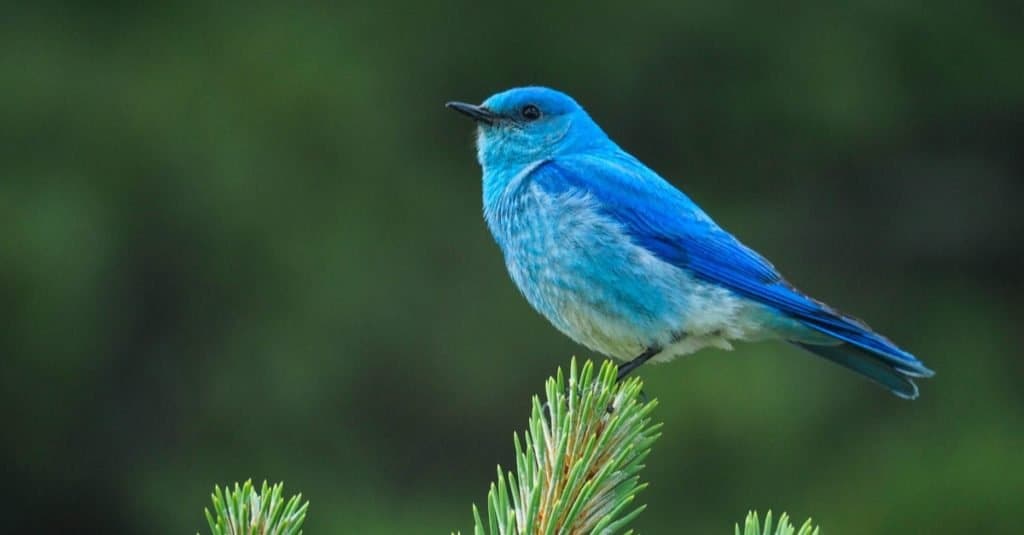Bluebirds are small, colorful birds that live throughout North America. Despite their name, these creatures often have orange, red, and white feathers in addition to their dominant blue color. The, genus to which bluebirds belong, Sialia, contains three somewhat unique species. So, where do bluebirds nest?
We’re going to look at each of the three species and show you where they are most likely to nest along with where they live in North America.
Western Bluebird

The western bluebird sits on a small branch.
©Hayley Crews/Shutterstock.com
The western bluebird (Sialia mexicana) is mostly found in the western parts of North America. Specifically, the bird’s range stretches from the southern reaches of Canada to Mexico, as far east as Texas. The birds in the northern extremes of this range migrate south for the winter and return north in the spring.
For the most part, western bluebirds nest inside trees with some form of natural cavity or one made by different animals. Sometimes, they will take up residence in a hole made by a woodpecker or a cavity created by another animal. They may also nest in a building with the right sort of cavity, and they can also take up residence in a birdhouse. Usually, western bluebirds nest fairly low to the ground, about 50 feet or less from the ground.
This species tends to settle in forests, deserts, and farmlands. So far, scientists have identified 6 subspecies of the western bluebird.
Eastern Bluebird

Male Eastern Bluebird perching on a snowy branch in a winter snow storm
©iStock.com/suefeldberg
As its name suggests, the eastern bluebird (Sialia sialis) mostly lives in the eastern part of the North America. The birds inhabit the lower parts of Canada from the middle of the country far east to New Brunswick and even Nova Scotia. In the United States, the birds essentially live east of the Rocky Mountains.
While the birds are year-round residents in most parts of the country, the birds in the northern extremes of the range migrate south for the winter. They may go far south into Central America where some birds live year-round and others migrate.
Like the western bluebird, the eastern bluebird prefers to live in natural holes in trees or those made by other birds. In particular, this species will often inhabit old woodpecker holes in oak trees and pine trees. Eastern bluebirds tend to build their nests less than 50 feet above the ground.
Mountain Bluebird

Mountain bluebirds have light underbellies and black eyes. Adult males have thin bills and are bright turquoise-blue.
©MTKhaled mahmud/Shutterstock.com
The mountain bluebird (Sialia currucoides) lives in mountainous regions in western North America. This species’ range overlaps with the eastern bluebird and the western bluebirds in some areas. The mountain bluebird’s breeding range stretches throughout the western portions of Canada all the way to the middle of Alaska.
Some of these birds live year-round in places like Oregon, California, Colorado, and New Mexico. However, members of the species also overwinter in warmer places including Texas and Mexico.
Like the other bluebird species, the mountain bluebird does not like to make its nesting home. Instead, these birds will use birdhouses along with natural cavities in trees or those created by other animals. They are not shy about occupying the holes created by woodpeckers, either. This species may build their nests lower to the ground than other species, often between 4 and 6 feet from the ground.
So, where do bluebirds nest? All three species usually build their nests between 4 and 50 feet from the ground in cavities created by other animals, especially woodpeckers. These colorful songbirds are not as picky as other creatures when it comes to making their nests. They just want a place that is not affected by the elements which also gives them a place to hide from predators.
The photo featured at the top of this post is © iStock.com/CathyKeifer
Thank you for reading! Have some feedback for us? Contact the AZ Animals editorial team.






